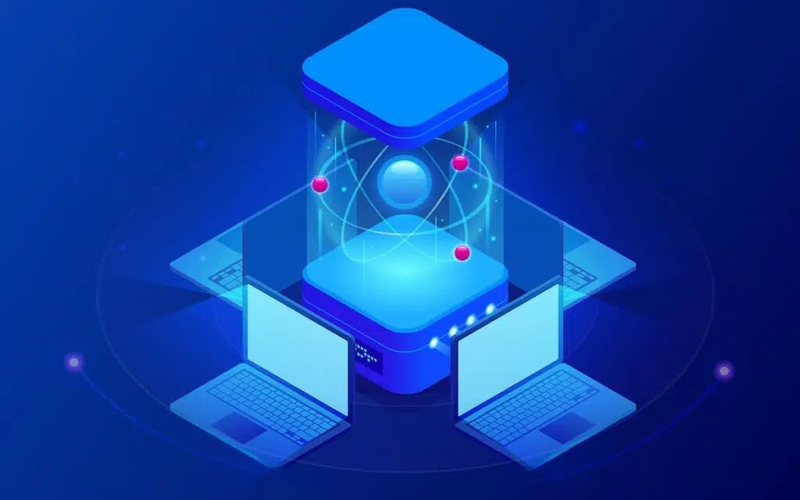
Quantum Advantage A Formal Inquiry into Computational Transcendence
Abstract
Quantum Advantage represents a critical milestone in computational science, denoting the point where a quantum computational system demonstrably outperforms the most powerful classical supercomputers for a well-defined, practical task. This is not merely a theoretical curiosity but a harbinger of a new computational paradigm. This article provides a formal examination of Quantum Advantage, delineating it from the more theoretical concept of Quantum Supremacy, exploring its foundational requirements in error correction and hardware, and surveying its transformative potential across key industries such as finance, optimization, and machine learning.
1. Definitions and Conceptual Foundations
The field operates under two closely related but distinct concepts:
* Quantum Supremacy: A theoretical milestone where a quantum computer executes a specific, often contrived, computational task that is impossible for any classical computer to solve within a reasonable timeframe (e.g., the lifetime of the universe). It is a proof-of-concept demonstrating the raw potential of quantum mechanics for computation.
* Quantum Advantage (aka Quantum Computational Advantage): A practical milestone where a quantum computer solves a useful, real-world problem more efficiently-in terms of time, cost, or energy-than the best known classical algorithm running on the world's most powerful supercomputers.
The key distinction lies in utility. Supremacy is about a computational *feat*; Advantage is about a computational *benefit*.
2. The Path to a Demonstrable Advantage: Hardware, Software, and Error Correction
Achieving a reliable Quantum Advantage is a multi-faceted challenge, contingent on progress in three interdependent domains.
2.1 The Hardware Imperative: Qubit Quality and Scale
Current quantum processors exist in the Noisy Intermediate-Scale Quantum (NISQ) era. They are characterized by:
* Intermediate Scale: O(50) to O(1000) qubits.
* Noise: Qubits are fragile, suffering from decoherence and gate infidelities, which limit the depth and complexity of executable circuits.
The journey beyond NISQ requires:
* Increased Qubit Count: To solve complex problems, thousands to millions of physical qubits are needed.
* Improved Coherence Times: Qubits must maintain their quantum state long enough to complete a computation.
* Higher Fidelity Gates: Quantum operations must be performed with extreme precision to minimize errors.
2.2 The Unavoidable Challenge: Quantum Error Correction (QEC)
The fundamental fragility of quantum states necessitates robust error correction. Unlike classical bits, qubits cannot be simply copied (per the No-Cloning Theorem). QEC works by encoding a single logical qubit -a stable, error-resilient information unit-into a complex entangled state of many physical qubits .
The most promising approach is the surface code . The resource overhead is substantial; it is estimated that a single fault-tolerant logical qubit may require thousands of physical qubits for encoding and continuous error correction. The development of practical QEC is the single most significant hurdle to achieving a sustained, widespread Quantum Advantage.
2.3 The Software and Algorithmic Layer
Hardware is useless without algorithms that harness its unique properties. Quantum advantage is not universal; it is problem-specific. Algorithms must be designed to leverage:
* Superposition: To explore a vast solution space simultaneously.
* Entanglement: To create complex correlations that guide the computation.
* Interference: To amplify the probability amplitudes of correct solutions while canceling out incorrect ones.
Prominent algorithms believed to offer an advantage include:
* Shor's Algorithm: For integer factorization, with profound implications for cryptography.
* Grover's Algorithm: For unstructured search, offering a quadratic speedup.
* Quantum Approximate Optimization Algorithm (QAOA) & Variational Quantum Eigensolver (VQE): Hybrid quantum-classical algorithms designed for NISQ machines to tackle optimization and quantum chemistry problems.
3. Prospective Domains for Quantum Advantage
The potential applications are vast, but several domains stand out due to their inherent alignment with quantum computational strengths.
3.1 Financial Modeling and Portfolio Optimization
Portfolio optimization is a classic problem in finance: given a set of assets, find the allocation that maximizes return for a given level of risk. This is a combinatorial optimization problem that becomes intractable for classical computers as the number of assets grows.
Mathematical Formulation: The problem can be mapped to a Quadratic Unconstrained Binary Optimization (QUBO) model or an Ising model. The goal is to minimize a cost function, \( H \), which represents the portfolio's risk-adjusted return:
\[H = \sum_{i,j} \sigma_{ij} x_i x_j - \mu \sum_{i} r_i x_i\]
where \( x_i \in \{0,1\} \) indicates whether asset \( i \) is included, \( \sigma_{ij} \) is the covariance between assets, \( r_i \) is the expected return of asset \( i \), and \( \mu \) is a risk parameter. Quantum algorithms like QAOA can explore the exponentially large set of possible portfolios \( (\{x_i\}) \) in superposition, using interference to converge on the optimal configuration far more efficiently than classical solvers.
3.2 Drug Discovery and Quantum Chemistry
Simulating molecular interactions is exponentially difficult for classical computers because the quantum state of a molecule with \( N \) electrons is described by a wavefunction in a \( 3N \)-dimensional space. Quantum computers, however, are natural simulators of quantum systems.
Mathematical Formulation: The key problem is finding the ground-state energy of a molecule, which involves solving the Schrödinger equation for a molecular Hamiltonian, \( \hat{H} \). The VQE algorithm uses a parameterized quantum circuit (ansatz) to prepare a trial quantum state \( |\psi(\vec{\theta})\rangle \). A classical optimizer then varies the parameters \( \vec{\theta} \) to minimize the expectation value of the energy:
\[E(\vec{\theta}) = \langle \psi(\vec{\theta}) | \hat{H} | \psi(\vec{\theta}) \rangle\]
This hybrid approach can, in principle, calculate molecular properties with an accuracy that is classically intractable, dramatically accelerating the design of new drugs and materials.
3.3 Machine Learning (Quantum Machine Learning - QML)
QML seeks to enhance classical machine learning models by using quantum subroutines.
* Quantum Kernels: Data can be mapped into a high-dimensional quantum feature space using a quantum circuit (a feature map). The inner product in this space, the quantum kernel \( K(x_i, x_j) = |\langle \phi(x_j) | \phi(x_i) \rangle|^2 \), can be computationally expensive to compute classically but natural for a quantum computer. This can empower powerful kernel-based methods like Support Vector Machines (SVMs).
* Quantum Linear Algebra: Algorithms like the Harrow-Hassidim-Lloyd (HHL) algorithm promise exponential speedups for solving large systems of linear equations (\( A\vec{x} = \vec{b} \)), a fundamental subroutine in many machine learning models.
4. The Present and Future Outlook
The field is in a transitional phase. While demonstrations of "supremacy" on artificial tasks have been achieved, a broadly recognized Quantum Advantage for a practical, valuable problem remains an active pursuit. The future trajectory involves:
- *Scaling Hardware: Building larger, more coherent quantum processors.
- *Advancing QEC: Achieving fault-tolerant quantum computation.
- *Developing "Killer Apps": Identifying and refining algorithms that deliver unambiguous commercial or scientific value.
- *Hybrid Integration: Seamlessly integrating quantum processors as accelerators within classical high-performance computing (HPC) architectures.
5. Conclusion
Quantum Advantage is not a singular event but a spectrum of capabilities that will be unlocked over time, problem by problem. It represents the moment when the abstract principles of quantum mechanics-superposition, entanglement, and interference-are translated into tangible computational power that surpasses the limits of classical systems.












